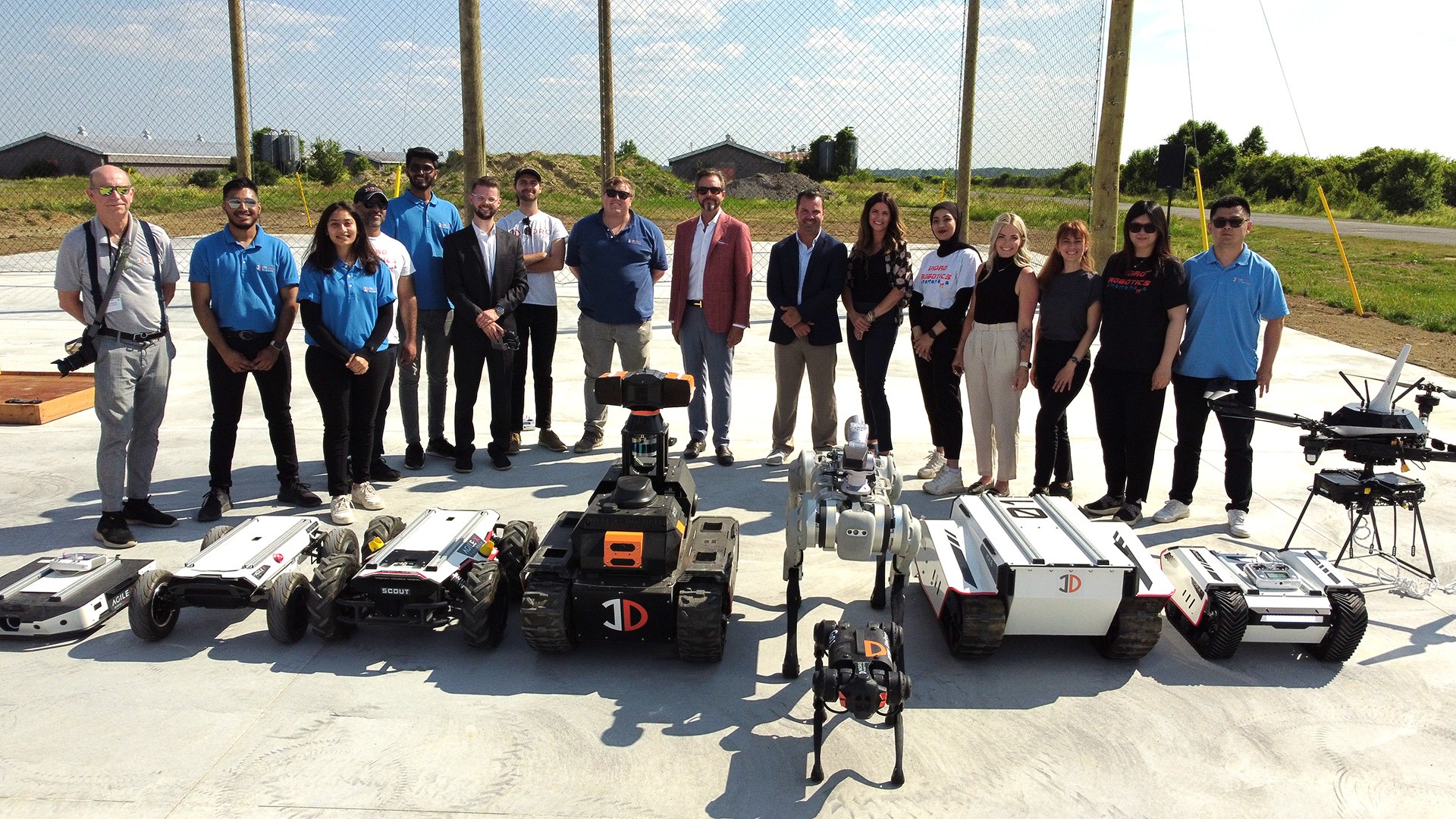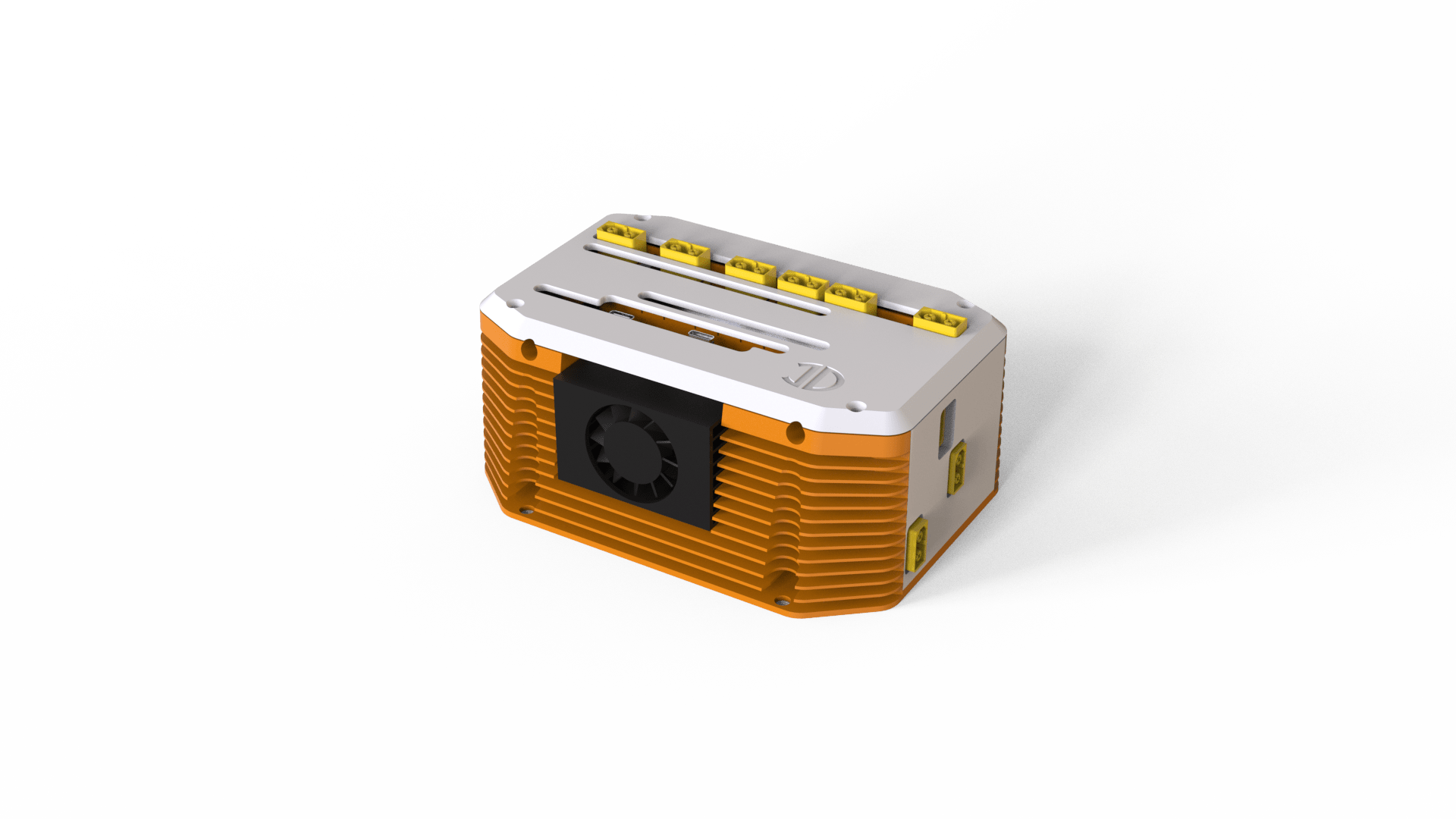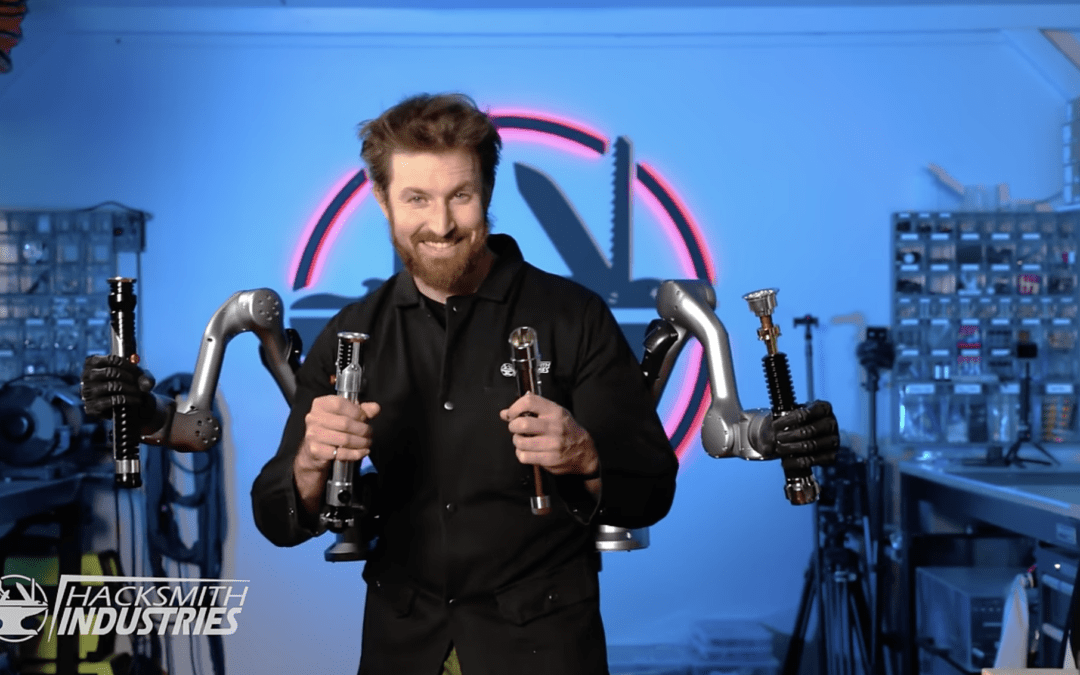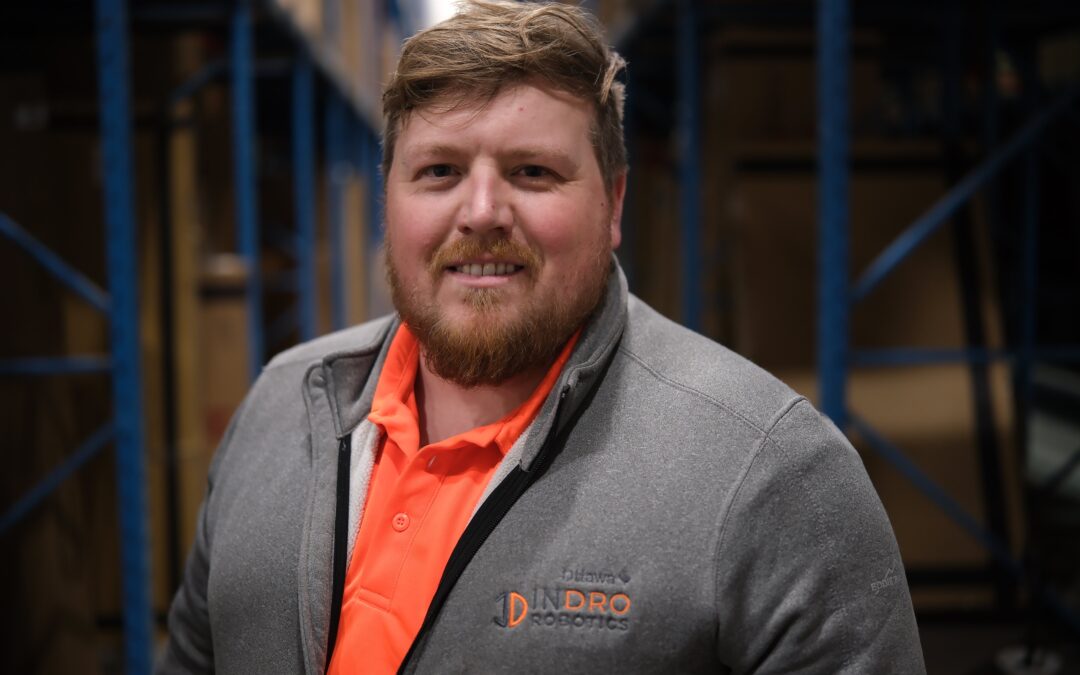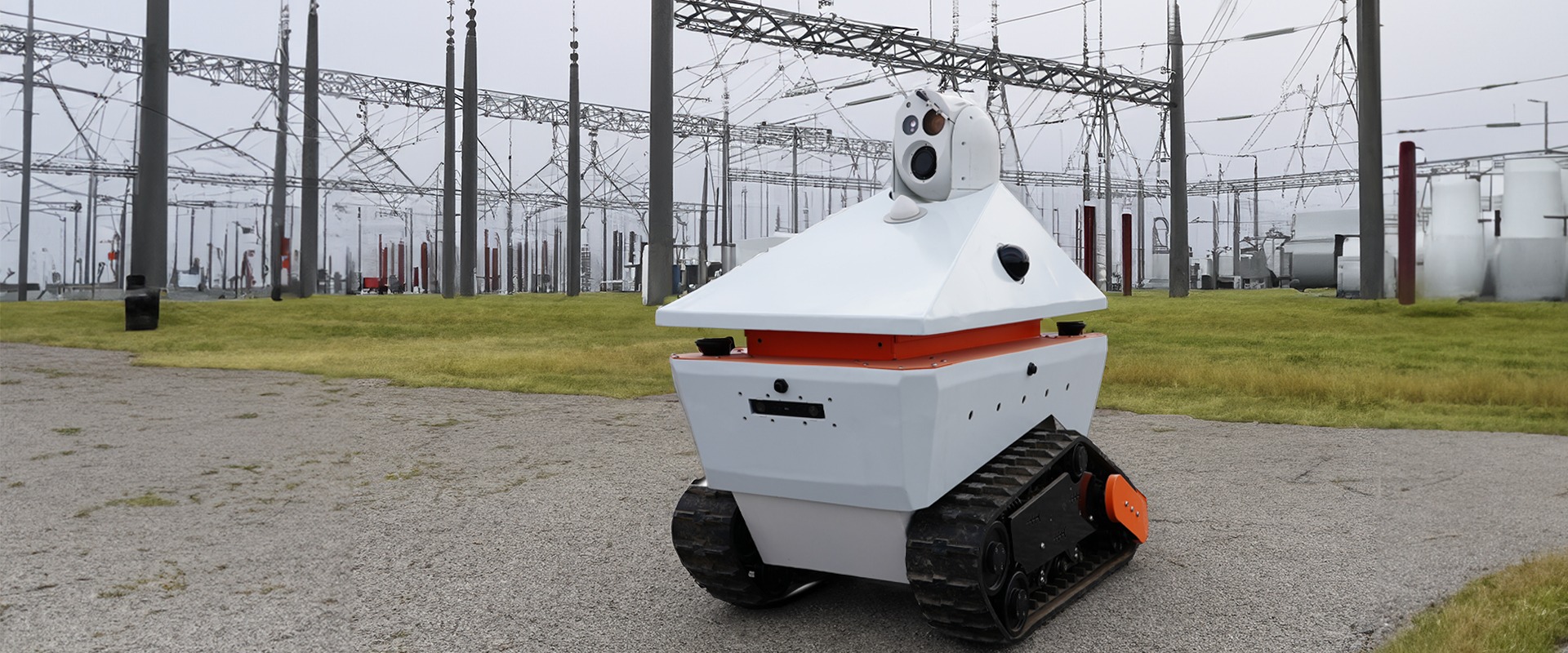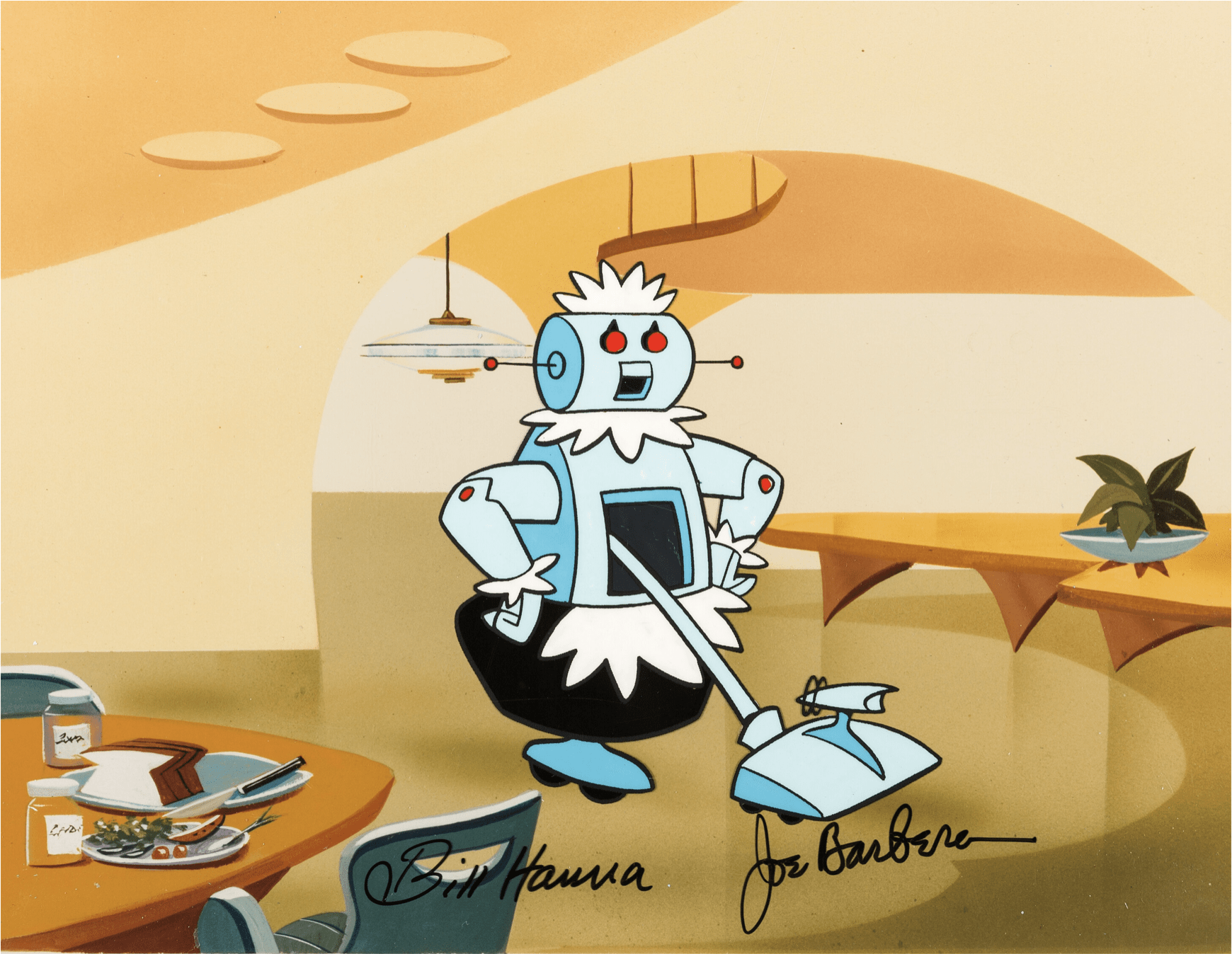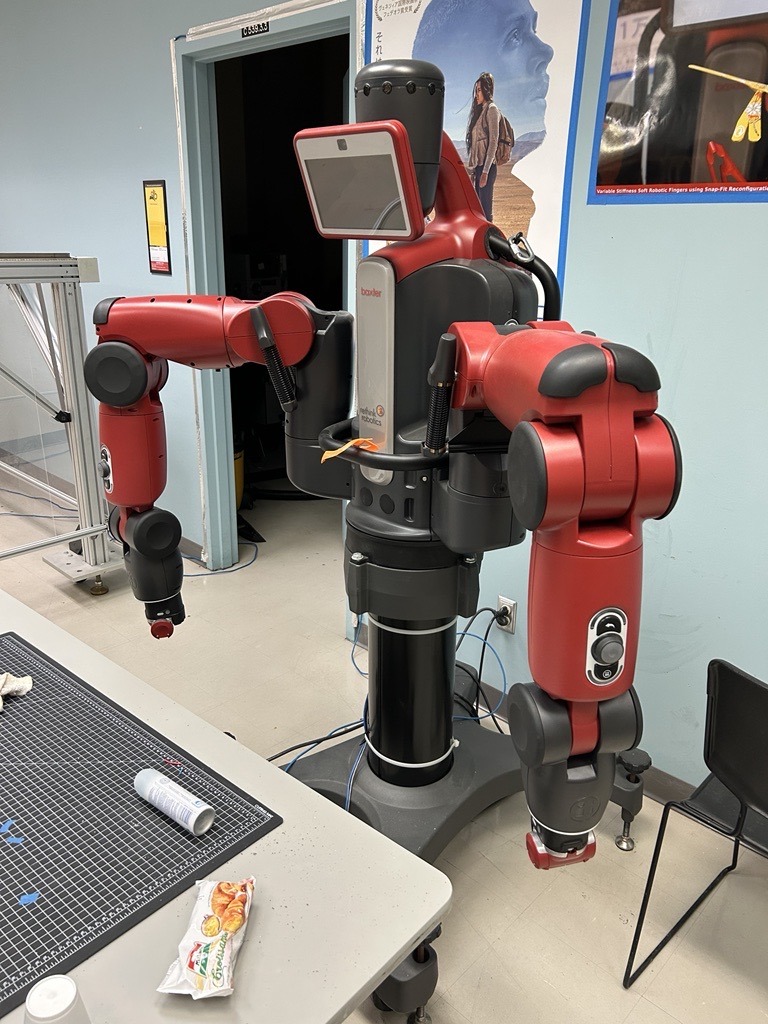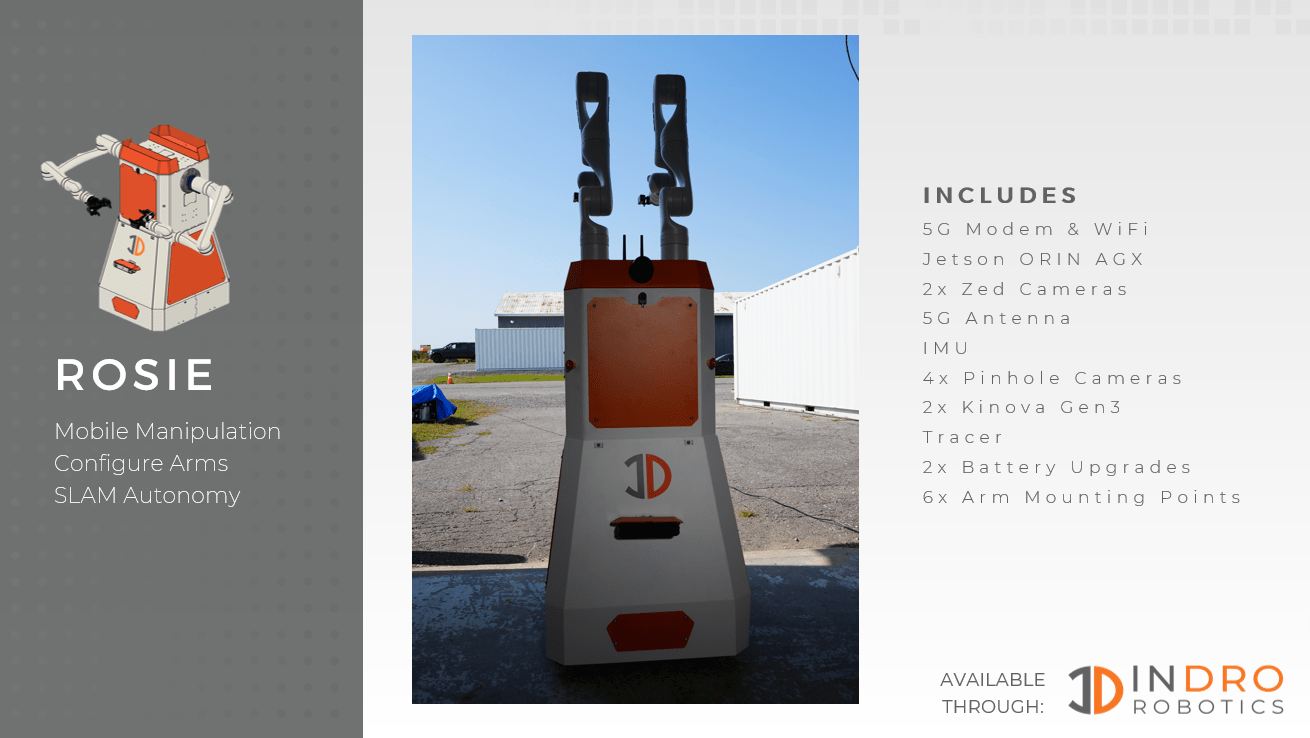
New InDro Sentinel has wireless charging enclosure for remote operations
By Scott Simmie
If you follow our news, you’re likely familiar with our Sentinel inspection robot. It’s been built specifically for monitoring critical assets like electrical substations etc. – places where you need regular eyes on assets without the cost and inconvenience of having a human being on site.
We are pleased to announce that InDro Robotics has perfected an outdoor enclosure that keeps Sentinel protected from harsh weather, while allowing for wireless recharging.
“If you imagine a robot in any sort of demanding outdoor environment to improve the longevity of the equipment, you want to keep it away from the elements as much as possible – which is why the enclosure exists,” explains Luke Corbeth, InDro’s Head of R&D Sales.
“For any demanding outdoor application such as substation inspection, solar farm inspection, etcetera, you’re going to want to keep the robot out of the rain, away from the wind, out of direct heat. These elements are why the enclosure exists.”
And the best part? Sentinel can autonomously return to that enclosure to rest and recharge completely on its own. And that makes it perfect for even the most distant of assets. If there’s a cellular connection, Sentinel can be a totally remote employee.
Below: The new Sentinel enclosure, on site at our R&D headquarters at Ottawa’s Area X.O
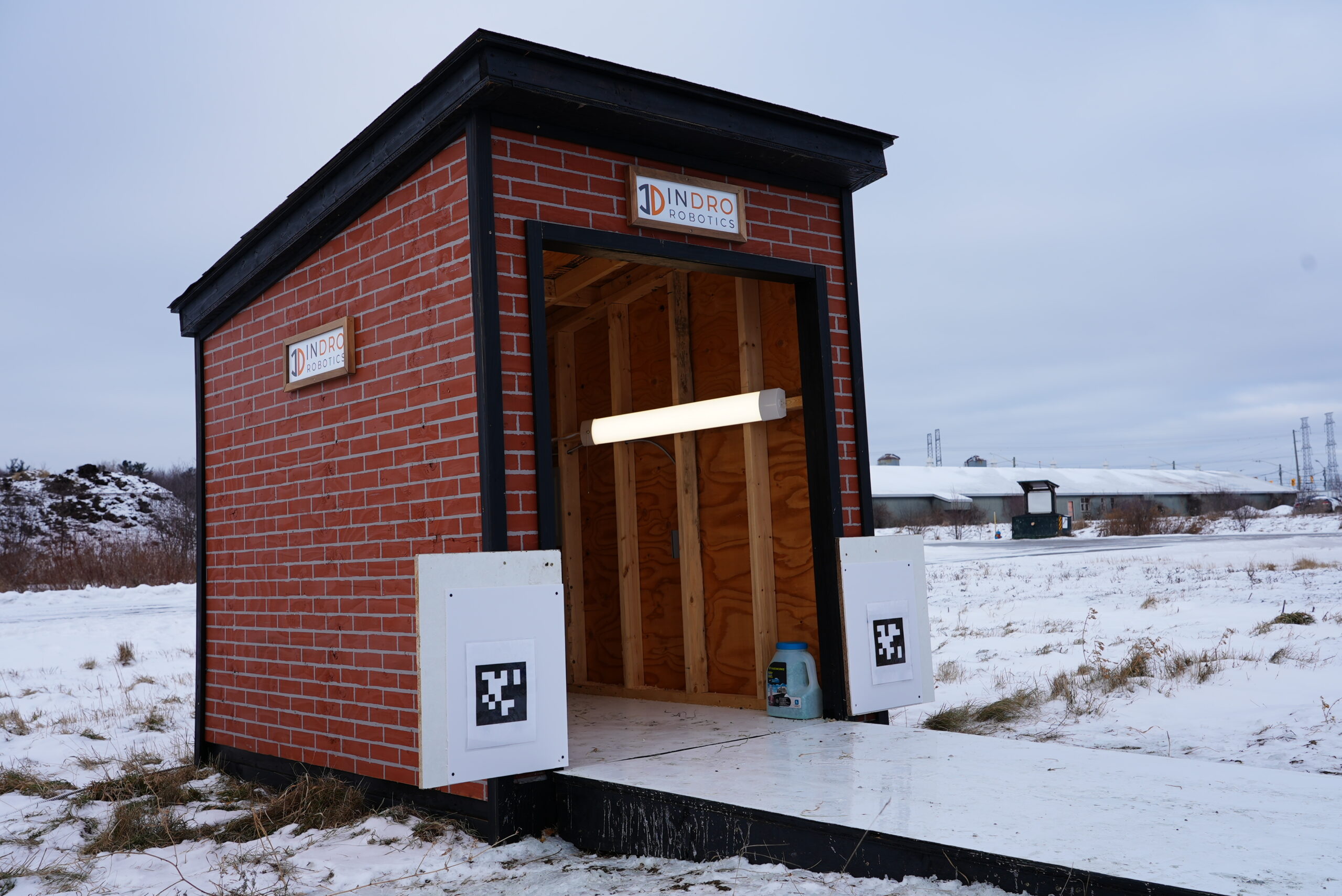
JANUARY, FEBRUARY, MARCH…
And what comes next? April, of course. And the reason we’re going down this road is because Sentinel finds its roost using a code known as AprilTags. They’re similar to QR codes, but have been designed for 3D orientation. Sentinel’s enclosure uses AprilTags – which are detected by onboard cameras – for the robot to find its way home, and snug up nice and close to its wireless recharging system.
“The robot is trained to know exactly what these tags look like from every angle,” says Corbeth. “And by looking at these tags, it’s able to determine: ‘Oh, I’m a little bit off in this direction, so I need to make this adjustment.’ That ensures that we have a smooth and reliable docking and undocking sequence every single time the robot goes in and out of the enclosure.”
There’s a slightly inclined ramp for Sentinel to access this tiny recharging home. And the floor is deliberately a bit slippery in order for Sentinel to fine-tune its docking procedure by, for lack of a better word, drifting inside the enclosure to get its bearings.. And the charging system? Amazing.
The Wibotic charger is incredibly efficient. One hour of wireless charging is enough for Sentinel to fully recharge and deploy on a five-hour mission. Let’s repeat that: One hour of wireless charging gives Sentinel five hours on the ground.
The other advantage is that, because it’s wireless, there are no mechanical interfaces. These can be a potential point of failure, which is the last thing you’d want on a remote, autonomous installation. The whole point of these installations is for a robot to take care of things on its own.
“Anytime you have a mechanical interface, there are usually prongs involved. These can get bent or damaged – which is the last thing you’d want on a remote installation. So wireless charging completely eliminates that potential point of failure,” says Corbeth.
Below: Sentinel in its enclosure. You can see one of the AprilTags, which are used for Sentinel to perfectly align with the Wibotic charger
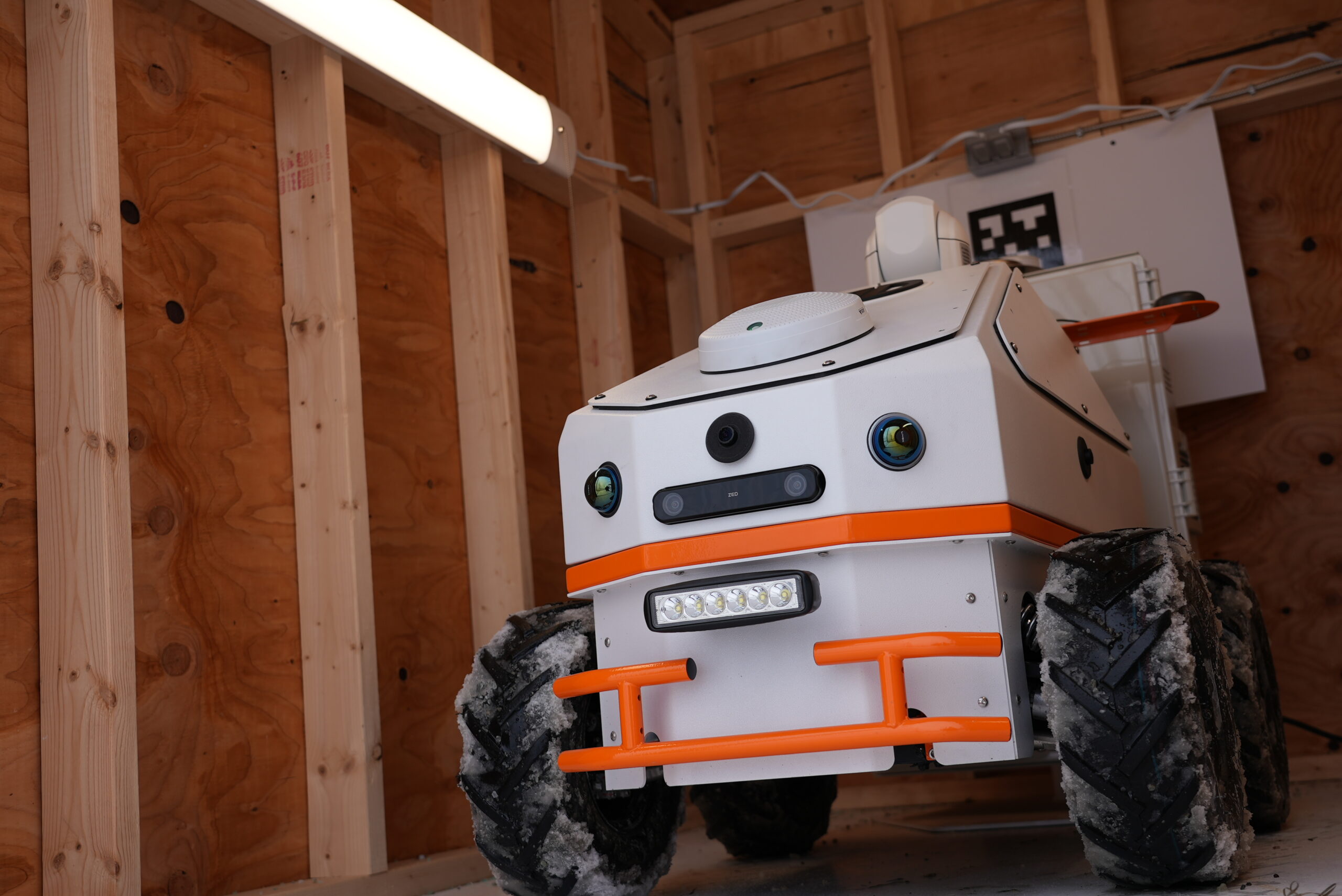
REAL WORLD DEMO
Sentinel has been through multiple iterations as platforms, sensors and compute improve. The newest version uses a wheeled platform (though a separate version with treads is available). Compute is a powerful AI-enabled processor capable of many Trillions of Operations per Second (TOPS). And because we deploy with InDro Controller, our in-house user interface, Sentinel can be easily programmed to repeat highly complex tasks.
Say, for example, you are particularly interested in the reading on a gauge. The first time you deploy Sentinel using InDro Controller, you would manually adjust the Pan-Tilt-Zoom camera to capture an image of that asset. But once you’ve done it once? InDro Controller remembers the settings – so you can deploy Sentinel on an autonomous mission and it will remember all parameters. It will capture the same image, on its own, during any subsequent deployment. This applies to any sensor, capturing any data.
HYDRO OTTAWA DEMO
Recently, InDro got in touch with Hydro Ottawa. We were looking to deploy Sentinel in a real-world situation, and Hydro Ottawa has an electrical substation in the city. We were interested in testing Sentinel in that scenario, and Hydro Ottawa was interested in seeing what Sentinel could do.
We deployed over the Rogers 5G network, using InDro Controller to quickly plot its route and some specific Points of Interest (which did indeed include a gauge). Then we let Sentinel go about its business completely on its own with an autonomous mission.
The result? Phenomenal. Sentinel captured all the salient data, demonstrating its immense capabilities as a ‘set and forget’ robot. Now that the data is in InDro Controller, Sentinel can carry out the same mission on a schedule with zero human intervention. Data will be automatically uploaded – and Sentinel is even capable of sending alerts if, say, that gauge was sending a reading of concern.
“We were able to plot a full preventative maintenance mission – and then run it autonomously several times within a two-hour window,” says Corbeth.
What’s more? It was freezing cold, putting Sentinel to the test in a harsh environment. This is what this robot was built to carry out – and can operate in environments from -20C to +30C.
And the Hydro Ottawa people?
“They were blown away,” says Corbeth. “They even told me: ‘Luke, your team should be very proud.'”
We are.
Below: Sentinel at a Hydro Ottawa substation

INDRO’S TAKE
Sentinel has been an ongoing project for InDro for several years. We have continually upgraded the product as newer sensors and AI compute capabilities have become available. In conjunction with InDro Controller, this is now a fully commercial product. In fact, we recently shipped three of these to a US client and look forward to reporting on this when they are first deployed (which is happening shortly).
“Sentinel is one of our core products,” says InDro Robotics Founder and CEO Philip Reece. “Our team, both at Area X.O and InDro Forge, have worked very hard on the design and integration of this product. And InDro Controller, under the hands of Head of Software RJ Bundy, is an extremely intuitive and powerful user interface. We look forward to manufacturing many more Sentinels in 2025.”
Oh. We almost forgot to tell you that Sentinel is available as a quadruped, so it can tackle stairs and more demanding environments. So cool.
Interested in learning more – including a remote demo where you can take control of Sentinel? Contact us here.


